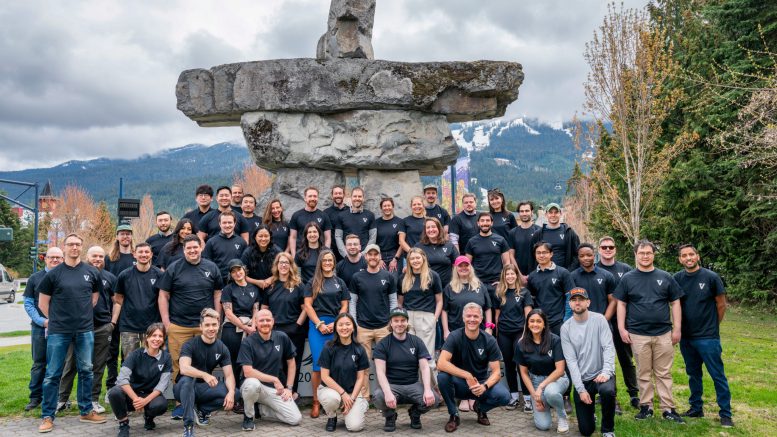“If you build it, they will come” has proven as true in the movie Field of Dreams has for interactive mining tech firm VRIFY and its investment success.
Just as with building a baseball diamond in a field to draw players in Kevin Costner’s sports-drama film, so it was with VRIFY’s creation of a 3D mine mapping platform.
At the end of May, VRIFY’s fundraising efforts were rewarded with $6 million from mining technology investors RCF Jolimont Innovation, Beedie Capital and Tiny.

VRIFY CEO Steve de Jong
“We’re seeing realization by the market…that we as an industry in the mining sector need to find new and better ways to communicate what we do,” said Steve de Jong, VRIFY co-founder and CEO in an interview with The Northern Miner. “The old, ‘here’s a cross section and a PowerPoint and would you like to invest in my company’ doesn’t work as well as it used to.”
Started in 2017 by de Jong and George Salamis, the provider of interactive 3D mine maps experienced a bump in growth over the last year, with annual recurring revenue growing by $800,000 in the first quarter, compared with growth of $150,000 in the same quarter in 2022. Annual revenue now stands at $5 million a year, and de Jong says VRIFY is targeting revenue of between $8 million and $10 million by the end of the year.
But while being able to navigate the visuals of a mine’s ore reserves and structure while an executive explains the content offers a rich, user-friendly presentation, VRIFY plans to use artificial intelligence (AI) to further enhance the experience.
The Vancouver-based company wants to use AI to assess how presentations can be most effective for users by analyzing massive amounts of data.
“Every piece of VRIFY content that you could create [you’ll get] a list of suggestions, and that might be how often you pause in your presentation, how much time you spend on various 3D components,” de Jong said. “And that’s all going to be driven by looking at what makes a successful presentation, whether it’s a higher view time or click-through or other components. And we’re going to use that to continually feed better and better presentations that really hit home with investors and stakeholders.”
Even though it’s relatively early days in the application of AI to mining, de Jong aims for disruptive change to the way mining communication works.
With drill core information, for example, large amounts of money have been spent on photographing cores, only for the photos to go into a pile and collect dust. AI can be deployed to drill even deeper into the complex data in those photos and correlate them with assays to look for patterns that humans can’t easily see.

An image from VRIFY’s 3D layout of a mine processing plant
“I think that’s where you’re really going to start to see trends and other elements that…we weren’t able to recognize before. Mineral exploration, I think that’s going to be the biggest benefactor of AI. And in the near term the strongest applications are going to come from the biggest data sets,” de Jong said.
One of the largest changes that de Jong believes might come from AI in mining is reducing the time it takes to produce technical disclosures and documentation. The ability of AI to quickly manage enormous amounts of data could cut a year-long process of going from drill hole to resource estimate to disclosure down to weeks.
And using AI-informed chatbots will bring the information to investors faster than it would take a CEO or geologist to respond to an email about drill results.
“I [could] record my 60-second response with my 3D model. You’ll get it back five minutes later. When you introduce AI to that you can actually start to create chat bots that can walk you through that 3D model…with no editing on my side at all,” de Jong explained. “I do think you’re going to start to see companies upload all of their public disclosure, technical documents [and] data and use essentially chatbots that really supercharge any investor relations person’s ability to communicate what they do as a whole.”
Driven by communication
Since its founding six years ago, VRIFY has experienced growth in spurts. In 2019, it partnered with Kirkland Lake Gold to launch the online KL Gold Deal Room that matches gold companies with investment opportunities. In February this year, Integra Resources, of which de Jong is lead director merged with Millennial Precious Metals. And in May VRIFY raised $6 million to fund its market expansion.
Behind all those activities is VRIFY’s belief that the mining industry needs to change how it communicates.
“It’s not just investors, that’s with all stakeholders, that’s internal discussions with community groups [and] Indigenous groups, right across the board. Our deep value driver is the ability for any mining company or mineral exploration company to unlock a deeper understanding with their audience. And we do that through visual tools,” de Jong said.
“The only way we’re going to be able to affect that change is to make a tool that’s easy to use, where it actually does take less time to do one than the other.”


Be the first to comment on "How talking to investors and public could be the start of AI’s mining shake-up"